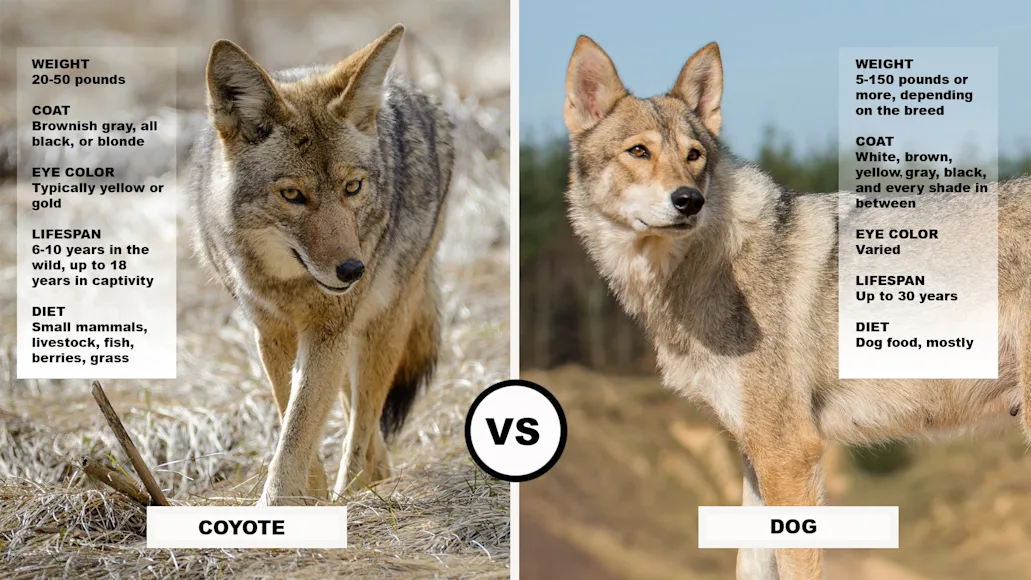With more than 20 million TikTok followers, JiffPom, a fluffy, well-dressed Pomeranian that can walk on two legs, may be the cutest dog in the world. Put that bundle of joy next to a coyote, and you’ll notice one thing: dogs and coyotes are very different. Wait a little longer, and you’ll also notice the coyote is mighty interested in JiffPom, and he doesn’t just want to take a selfie. The big difference between coyotes vs. dogs, of course, is that coyotes are wild animals while dogs have been domesticated.
Dogs and coyotes are part of the same genus, Canis, but because a coyote has never been domesticated, they have different physical attributes, a different diet, different habits, and a more wiley disposition than dogs. It may be easy to confuse some dog breeds with coyotes at a glance, but they are two different animals. If you’re still having trouble, here’s a little more on coyotes vs. dogs.
Coyote vs Dog: The Key Difference

Because of domestication, dogs have become more docile than their wild ancestors. Кристина Корнеева / Adobe Stock
Domestic animals come from wild stock, and dogs are no different. They are descendents of wolves, and over thousands of years of breeding, they have come to look and act differently than their wild great grandparents. By taking the most submissive wolves and breeding them over and over again, we turned them into our best friends.
Coyotes are different. Instead of humans sorting out which ones get to breed, Mother Nature does, and she can be pretty cutthroat. Only the strongest, most aggressive, and cunning coyotes get to pass down their genes—as opposed to the ones with floppy ears and wrinkly faces. Coyotes have been streamlined to thrive in the wild. They are tuned to find food, avoid trouble, and maintain their territory. Dogs have been streamlined to serve humans—whether that means pointing a pheasant or cuddling on the couch—because we made them that way.
Table of Contents
Physical Differences Between Coyotes and Dogs
How Coyote and Dog Diets Differ
Coyote vs. Dog Behavior
Dog Breeds that Look Like Coyotes
Coyote vs. Dog: Who Would Win in a Fight?
Physical Differences Between Coyotes and Dogs
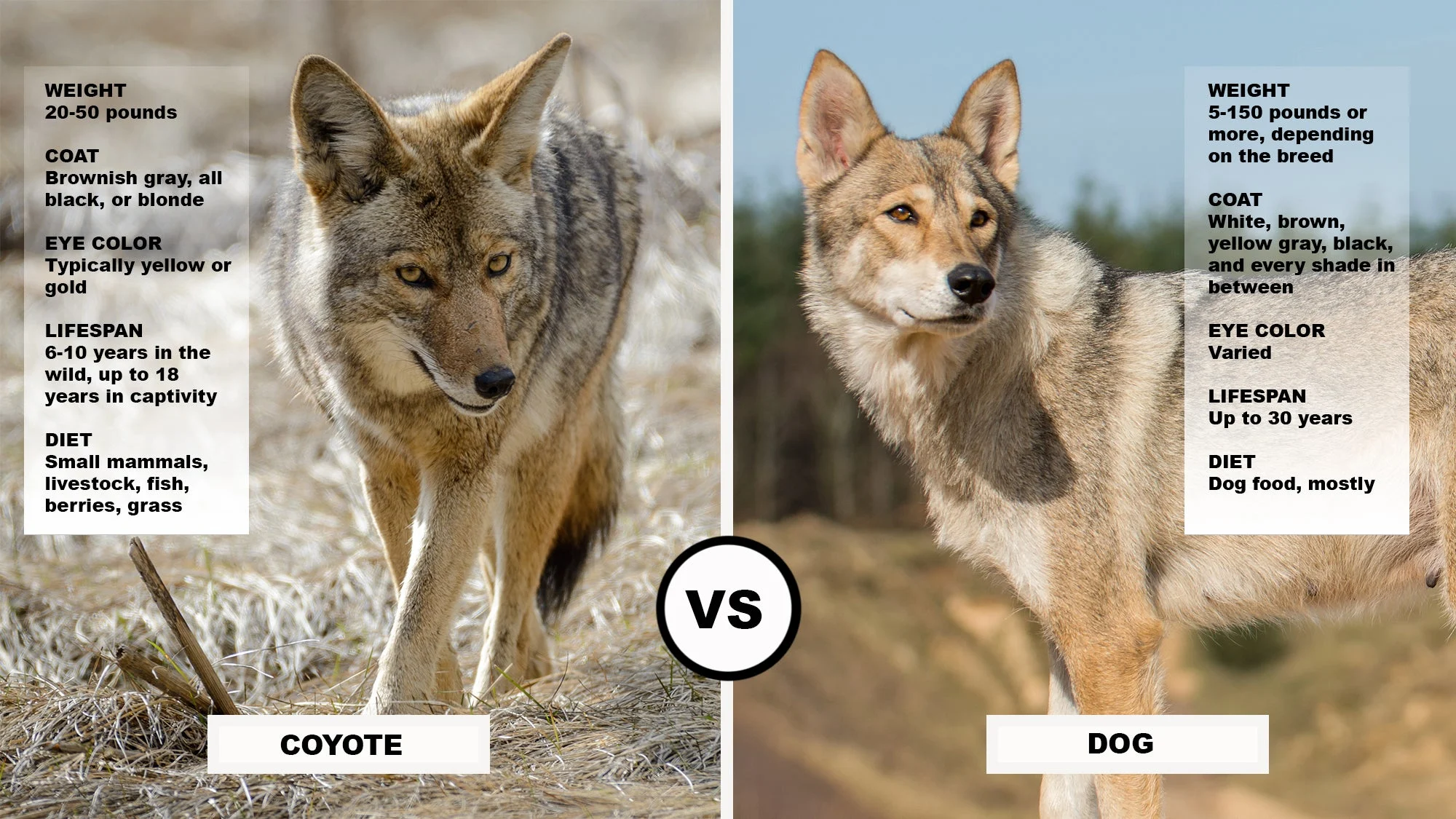
A wild coyote of the left and a domestic Tamaskan dog on the right. Adobe Stock / Field & Stream
Weight
Dogs can weigh up to 150 pounds and some are less than 5 pounds. By comparison, big Eastern coyote will top out at around 50 pounds and on the low-end can weigh as little as 30 pounds. Coyotes in the Southwestern U.S. usually weigh between 20 and 25 pounds.
Coat
Coyotes only come in a few flavors. Their coats are usually brown and tan mixed with gray and black. There are also all-black coyotes and strawberry-blonde coyotes. All coyotes have a thick coat with an undercoat that grows in during cold weather. Dog coats vary widely depending on the breed. Some have extremely short hair, while others have a thick undercoat that sheds all over your furniture and clogs up the vacuum cleaner. Domestic dog coat colors can be anywhere from stark white to chocolate brown and have spots, ticking, brindle patterns, and more.
Lifespan
The oldest dog ever was a Rafeiro do Alentejo named Bobi who lived for 31 years in Portugal. His owner said he spent most of his time roaming around off-leash with cats—go figure. Dog lifespans are typically between eight and 20 years depending on the breed. Coyotes typically live 6 to 10 year, and up to 15 if they don’t meet an untimely death.
Other Physical Attributes
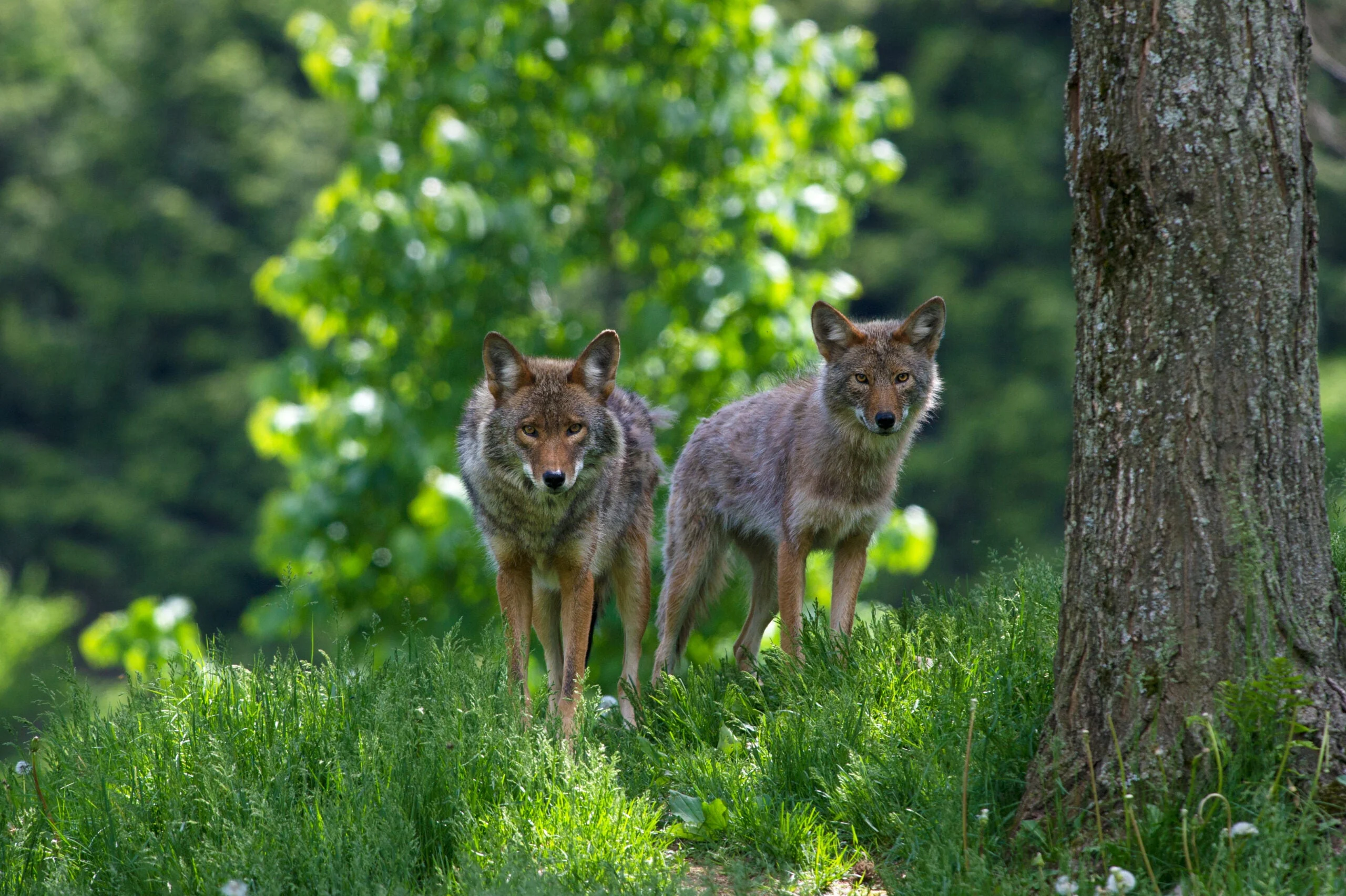
Coyotes have big ears and are usually more slender than dogs. Nina / Adobe Stock
Coyotes usually have gold-colored yellow eyes (the better to see you with), and big ears (the better to hear you with). They’re lean in the body and they have a big bushy tail. Some dogs have similar ears, eyes, and tails to coyotes, but dogs generally look a bit more filled out and less lean.
How Coyote and Dog Diets Differ
Coyotes may look like vicous predators, and they can be, but they’re really opportunists. They eat small animals, livestock, fish, berries, and even grass. The bulk of a coyote’s diet really depends on where they are and what’s available. If several of them can catch a weak deer struggling through deep snow, they’ll chow down. And unlike some predators, coyotes aren’t above scavenging.
Left to his own devices, your dog would probably do the same—and many dogs do. But because dogs are domesticated, things that might not upset a coyote’s stomach could hurt your dog. Dogs usually eat Kibbles N’ Bits or the like, and only really good dogs should get something extra, like pizza crust, a slice of cheese, or the occasional raw egg (give it to them shell-and-all and stand back. It’s hilarious).
Coyote vs. Dog Behavior
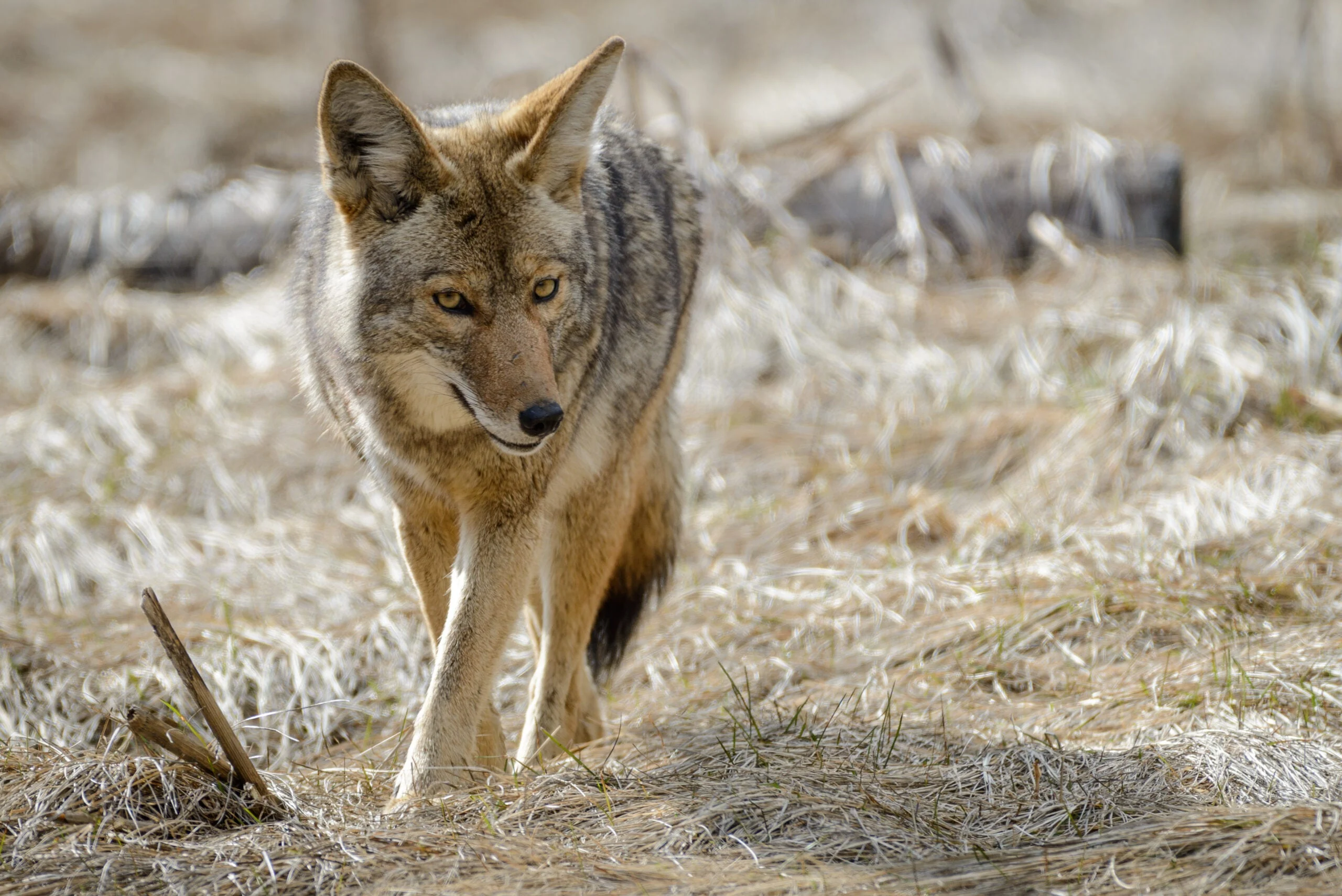
You’d have your hands full if you tried to raise a wild coyote as a pet. Elliot / Adobe Stock
When it comes to behavior, coyotes are territorial and aggressive. But they can also be shy towards humans and dogs. If you brought one home and tried to turn it into a pet, or even tried to raise a coyote pup as a dog, it would probably turn your life upside-down.
Researchers in Russia actually tried something similar with foxes in the the 1950s. At first the wild foxes were terrible as pets. Even though they were raised in captivity, they kept all of their wild tendencies and ablivilance toward humans. But for around 50 years, researchers bred generation after generation of only the submissive foxes, and ended up with a creature that could appreciate a good snuggle.
The experiment illustrated how dogs came to be. Instead of 50 years of selective breeding, dogs have aquired their good behavior over centuries. Just for kicks, the Russians also bred a control group of only the most aggressive foxes from each litter. They ended up with 50 years of more wild foxes, and every year, the foxes got a little meaner.
**Related: Wolf vs. Coyote
**
Dog Breeds that Look Like Coyotes
Saarloos Wolf Dog
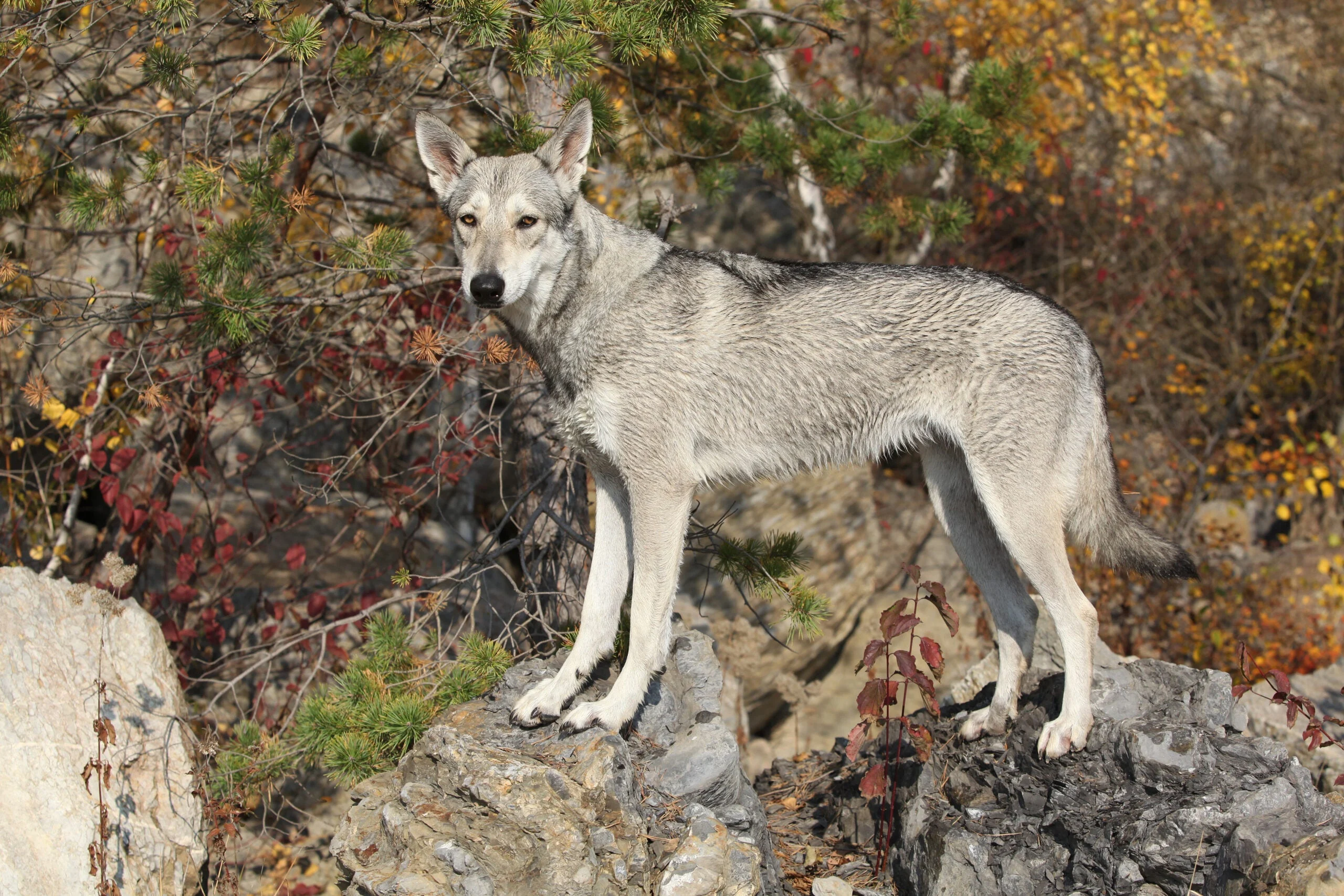
A Saarloos wolf dog. Zuzana Tillerova / Adobe Stock
is a cross between a German shepherd and a Eurasian grey wolf. A Dutch man named Leendert Saarloos decided this would be a good idea because he thought German shephards were getting too soft. Saarloos wolf dogs look a like coyotes, but they are generally bigger, at 80 to 90 pounds. Some coyotes have cross-bred with wolves and dogs, and they may be around that size. But the Saarloos wolf dog’s German-shephard-like face usually sets it apart.
Siberian Huskey
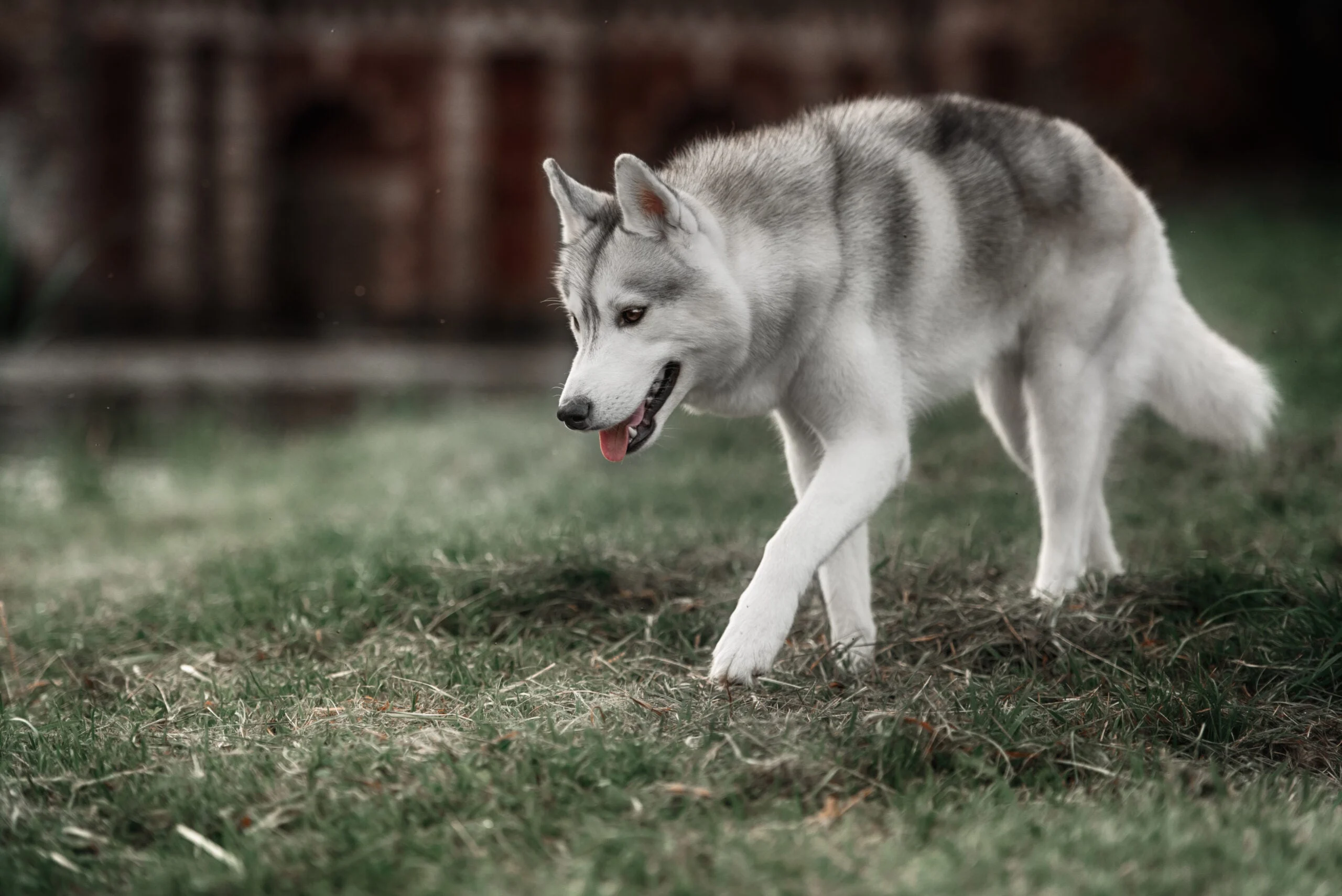
A Siberian husky. brusnikaphoto / Adobe Stock
Siberian Huskys were bred to be sled dogs by the Chukchi people in northern Asia. They have a wolf-like appearance but their white and grey coats are a dead-giveaway that they aren’t a coyote. Siberian Huskys also look fluffier than coyote with thick coats for harsh winter climates.
Tamaskan
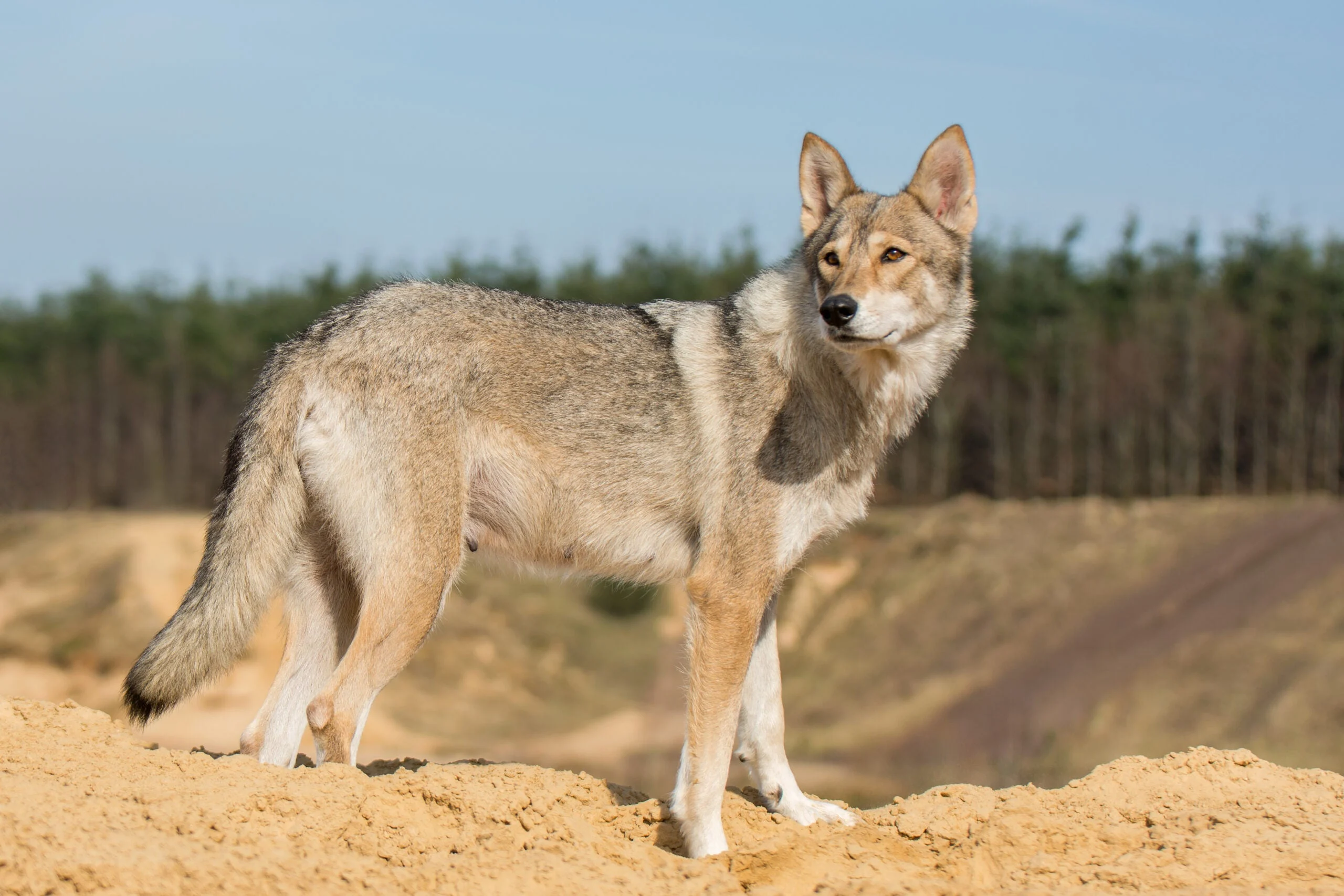
A Tamaskan dog. gebut / Adobe Stock
The only dog that’ll really give a coyote a run for its money in the looks department is a Tamaskan
. They have a bushy tail, coyote-like face, and similar coloring. If you live somewhere where coyote hunting is popular, don’t let your Tamaskan roam too far during the season without an orange vest or bright collar. They’re a mix between an Alaskan Malamute, Siberian husky, and a German shepherd.
Coyote vs. Dog: Who Would Win in a Fight?
It really depends on the dog. Dogs like JiffPom might only have a chance at giving a coyote indegestion. Other dogs can do pretty well against coyotes. There are many stories of dogs facing off against one or multiple coyotes and coming out on top. Some dogs are even bred to chase down coyotes, and the coyotes don’t stand a chance.
When it comes down to it, coyotes don’t usually want to fight dogs that are as big or bigger than them. Unless a coyote is really desperate, it’ll try to run away rather than take its chances fighting a dog. Predators in the wild don’t like to antagonize other predators unless they want to eat them, and even then, it’s a lot easier to eat something that doesn’t have sharp teeth. The only time a coyote wins in a coyote-vs-dog fight is if the dog is old and sick or really small. Unlike dogs, coyotes can be real scoundrels.

